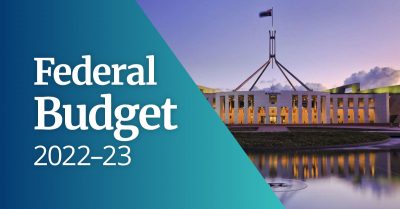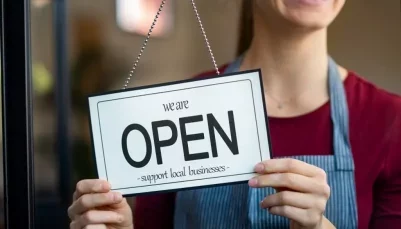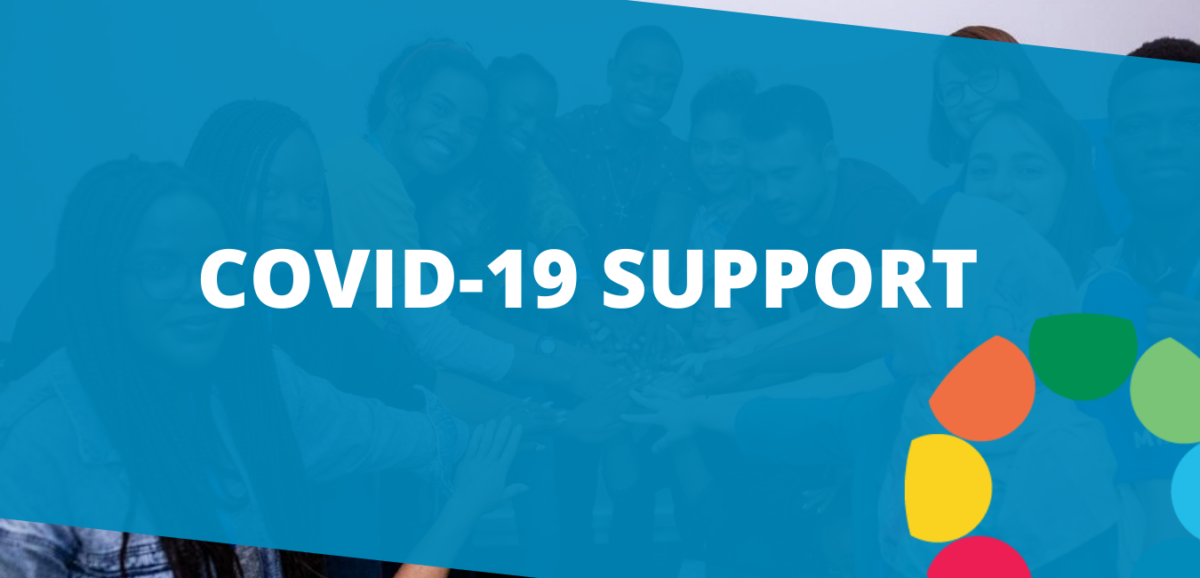We take insight here of the mainly tax changes in the Federal Budget 2022-23 2.0 announced in October 2022, in relates to the topics of Individual & Families, Superannuation & Investors, Business & Employers, and Government & Regulators.
Individual & Families
Child Care Subsidy lifted
| From | 2022-23 |
For families earning less than $80,000, the maximum Child Care Subsidy (CCS) rate increases from 85% to 90%, but the rates will reduce by 1% for each additional $5,000 in income and reaches 0% CCS when families earning up to $530,000.
The current higher CCS rates will be maintained for families who have more than one child in childcare who is 5 years old or younger, but the higher CCS rate will cease after the older child’s last session of care, or when the child reaches age of 6.
From 2022-23, families with First Nations children will receive a base entitlement of 36 hours per fortnight of subsidized early childhood education and care, independent of income level or activity hour.
The change in CCS comes with a renewed emphasis on industry compliance, requiring providers to report CCS related revenue and profits publicly. On top of that, managing CCS from 2022-23 onwards will require electronic payment of early childhood education and care gap fees, to prevent from fraudulent claims for cares not received.
Paid parental leave changes
| From | 1 July 2023 1 July 2024 |
From 1 July 2023, the Paid Parental Leave Scheme will be reformed to provide higher flexibility for families. Either parent is able to claim the payment and both birth and non-birth parents can receive the payment when they are eligible. Parents are also able to claim payment simultaneously so both of them can take leave at the same time
A new family income test of $350,000 is introduced to the eligibility criteria. The family income test is applicable when parents do not meet the individual income test.
From 1 July 2024, two additional weeks a year will be added under the new parental leave scheme until it reaches 26 weeks from 1 July 2026.
Both parents can share the leave entitlement under the ‘use it or lose it’ basis, emphasizing on sharing equal responsibilities for caring. Sole parent will access the full 26 weeks of the paid parental leave.
Encourage pensioners back to work
| From | 2022-23 |
The government is encouraging age and veteran pensioners to work and earn more before their pension is reduced by providing a one-time credit of $4,000 to their Work Bonus income bank.
This change will increase the amount pensioners can earn before their pension is reduced, from $7,800 to $11,800.
The Work Bonus allows eligible pensioners to earn more before it affects their pension rate, the current rule of which first $300 income per fortnight is not assessed and not applicable to pension income test. In addition to the pension income test free area, the Work Bonus will operate. the Work Bonus is not used in a fortnight, it accumulates in an income bank with standard maximum of $7,800. It allows pensioners to work on casual basis to not be disadvantaged compared to those who receive regular fortnight income.
Reform to aged care
The government is providing $2.5bn over 4 years to improve the quality of aged care in residential aged care facilities. from 1 July 2023, all residential aged care facilities will require a registered nurse onsite 24 hour per day, 7 days a week. From 1 October 2024, all residents in residential aged care facilities will have their care minutes increased to 215 minutes per resident per day.
The aged care form will set a cap limit on the charges the approved home care providers may charge on care recipients, and the removal of exit fees.
Extra support for floods and natural disasters
The government is providing $51.5m to support communities impacted by natural disasters through the Australian Government Disaster Recovery Payments (AGDRP), Disaster Recovery Allowance (DRA) and other payments made under the Disaster Recovery Funding Arrangements.
Increase the income limit on Seniors Health Card
A highly income test limits will be applied for the access of the Commonwealth Senior Health Card (CSHC), CSHC provides benefits in subsidised pharmaceuticals and other medical benefits to self-funded retiree who have reached aged pension age.
The income test incorporates adjusted taxable income and deeming on account-based pensions unless grandfathered under the pre-1 July 2015 rules. Note that CSHC is not asset tested.
| Current ($ per annum) | New ($ per annum) | |
| Single | $61,284 | $90,000 |
| Couples combined | $98,054 | $144,000 |
Legislation enabling the increase is before Parliament.
Social security deeming rates will be freeze at their current level for further two years until 30 June 2024.
Disposal of sale of main residence extended with income support asset test
The government will:
- Assets test exemption for principal home sale proceeds will be extended from 12 month to 24 months for income support recipients.
- The income test will apply the lower deeming rate (0.25%) to principal home sale proceeds when calculating deemed income for 24 months after sale of the principal home.
Until the income support recipient gets another main residence or the 24-month period is expired, the exemptions can apply. The extension Bill is now in front of Parliament.
Raise to veterans total and permanent incapacity payments
| From | 2022-23 |
The Special Rate of Disability Compensation Payment, Temporary Special Rate Payment, and the Special Rate Disability Pension for veterans will be raised by $1,000 every year.
Household solar community batteries
| From | 2022-23 |
Across the country, the Australian Government will support $224.3m fund over 4 years (from 2022-2023) to deploy 400 batteries in community.
A related solar initiative will also receive an additional $102m, in commitment to establish a Community Solar Banks program for deployment of community-scale solar and clean energy technologies. It is aimed to target regional communities, social housing, apartments, rental accommodation, and households that are usually unable to use rooftop solar.
Superannuation & Investors
Change to taxation of listed companies buy-backs off-market share
| From | 7:30pm AEDT, 25 October 2022 |
From 25 October 2022 7:30pm AEDT, the tax treatment of off-market share buybacks by listed public companies will be aligned with the treatment of on-market buybacks. This change expects to deliver $550m in savings.
An on-market buy-back is like a listed company buys its shares back through the stock exchange platform. All others are treated as off-market buy-backs.
According to current legislation, a company conduct an off-market buy-backs will consider what portion of proceeds are taxed as dividend and what portion of proceeds are taxed under CGT rules. Dividend can potentially include franking credits.
For listed company conducting an on-market buy-back, the full transactions are taxed under CGT regime and therefore franking credits cannot be applied to the shareholders.
It is a potential tax advantage when ff-market buy-backs is offered to low-taxed shareholders eg. superannuation funds. The government is concerned with tax treatment inappropriate exploitations between on and off-market buy-backss.
Only listed public companies are mentioned in this Budget. Therefore, it is presumably interpretated that for private companies and public companies that are not listed, the current tax treatment of off-market buy-backs will be unchanged.
Although this announcement hasn’t been legislated, with the immediate effective time of Budget night, any new off-market share buy-backs will be affected instantly.
Eligibility of ‘Downsizer’ extended to 55
| From | First quarter after Royal Assent |
The government is now reducing the age requirement for individuals making ‘downsizing contribution’ from 60 to 55 years of age.
Currently, eligible ‘downsizers’ aged 60 or older can make ‘downsizing contribution’ up to $300,000 per person ($600,000 for couple) to their super fund when they dispose their home.
If you have owned your principal residence in Australia for the past ten or more years and now you are selling, you can contribute the downsizer proceeding into your superannuation. The contributions are exempted from the age test, work test, and your total superannuation balance; not exempt from your transfer balance cap though.
The expanding age legislation eligibility for downsizer contributions is now in front of Parliament.
Postponed relaxation of the requirements of SMSF residency
Earlier this year’s Budget, for Self-Managed Super Fund (SMSF) and small APRA Regulated Funds (ARFs), the residence rules will be relaxed by extending the central control and management test safe harbour from two to five years for SMSFs. The active member test for both fund types are also removed.
This measure was supposed to be started from 1 July 2022. But in this Budget, the Government will not start the measure until the income year commencing on or after the date when Royal Assent enables the legislation.
Removed the requirement of 3-year SMSF audit
The 3-year SMSF audit requirement announced back in 2018-19, applies to SMSFs with history of good record-keeping and compliance, only need to have their fund audited every three years, will be removed.
The measure will not be proceeding announced in this Budget.
Digital currency not a foreign currency
Digital currencies such as Bitcoin will continue to be excluded from the Australian income tax treatment of foreign currency. However, digital currencies issued by, or under authority of a government agency, will be continually taxed under foreign currency.
Business & Employers
Scrapped intangible assets self-assessment
The previously announced measure that due to commence from 1 July 2023, taxpayers will be able to self-assess the effective life of certain intangible assets has been scrapped. So the requirement to use the effective life currently prescribed by statute continues.
The measure was for assets acquired from 1 July 2023 such as patents, registered designs, copyrights and in-house software.
Significant increase in penalties for the breaches of competition and consumer law
| From | 2022-23 financial year |
From 2022-23, corporations breaching competition and consumer laws will be penalized more heavily, fine will jump from a maximum of $10m to $50m per breach or 10% of annual turnover to 30% of turnover (whichever is greater) for the period the breach took place.
Energy efficiency funding for SMEs
| From | 2022-23 financial year |
From 2022-23, the government will provide $62.6m over 3 years to support small and medium enterprises (SMEs) in funding energy efficient equipment upgrades. The funding aims to support studies, planning, equipment and facilities upgrade that leads to better energy efficiency, reduce emissions or improve management of power demand. No further details are currently available.
Deferred requirements for ridesharing reporting
Back to the 2019-20 Mid Year Economic and Fiscal Outlook (MYEFO), for data matching purposes, sharing economy online platforms were required to report participating sellers ‘ identification and income information to the ATO. These measures have now been deferred from:
- 1 July 2022 to 1 July 2023 for transactions in relation to the supply of ride sourcing and short-term accommodation, and
- 1 July 2023 to 1 July 2024 for all other reportable transactions (including but not limited to asset sharing, food delivery and tasking-based services).
Earnings based test introduced to thin capitalisation rules
| From | 1 July 2023 |
The government is making amendment to the thin capitalisation rules which affects the amount that can be claimed as debt deduction, such as interests. A new earnings-based tests is introduced to replace the current safe harbour and worldwide gearing tests, that limit debt deductions to more in-line with entity’s profits.
Applying to global entities running in Australia and any inward or outward investor, aligning with the existing regime of thin capitalisation, the measures will:
- Cap a debt-related deductions to 30 per cent of profits of an entity (EBITDA is used as the metrics of profit). The current safe harbour test will be replaced by this new earnings-based test.
- Deductions rejected under the EBITDA test of entity-level is allowed (interest expense amounts over the 3% EBITDA ratio) to be carried forward and claimed in a future income year (up to 15 years).
- An entity in a group is allowed to claim debt-related deductions up to the level of the global group’s net interest expense as a share of earnings (that could be over the 30% EBITDA ratio). The global gearing ratio will be replaced by this new earnings-based group ratio.
- An arm’s length debt test will be kept as a substitute test that will only apply to the external (third party) debt of a entity, which doesn’t allow deductions for related party debt.
Existing thin capitalisation rules still apply to financial entities.
The current thin capitalisation rules limit debt deductions up to the three different tests whichever is bigger:
- A safe harbour (debt to asset ratio) test;
- An arm’s length debt test; and
- A worldwide gearing (debt to equity ratio) test.
Declaration of companies’ subsidiaries
| From | 1 July 2023 |
New reporting from 1 July 2023 will request:
- Australian public companies (listed and unlisted) to reveal information about the number of subsidiaries and their tax residency;
- Bidders for contracts for Australian Government valued greater than $200,000 to reveal their country of tax residency (supply their ultimate head entity’s country of tax residence); and
- Significant global entities, to prepare to release publicly for certain tax information on a country by country (CbC) basis and a taxation approach statement.
Global entities disallowed deductions for intangible assets
| From | Payment made on or after 1 July 2023 |
Significant global entities with at least $1bn global revenue will be disallowed to claim a tax deduction on a direct or indirect payments made to related low or no tax jurisdictions parties in regards to the usage of intangible assets, such as royalties paid for the trademarks and other intellectual property items usage.
A low or no tax jurisdiction is one with:
- A tax rate of less than 15%, or
- A tax preferential patent box regime without significant substance.
The measure will be commented on or after 1 July 2023 for such type payment.
This measure could impact on Australian subsidiaries of a foreign head entity whose global revenue of the consolidated group is $1bn or more for accounting purposes.
Government & Regulators
ATO focused area
Individual income tax deductions and false declaring
Additional $80.3m will be handed down to ATO to smash the non-compliance behaviour including:
- False deductions for overclaiming; and
- Short report of income
This measure will be expected to raise tax revenue by $674.4m and direct payment by $80.3m over 4 years preriod.
Shadow economy and tax fraud in business
The ATO’s Shadow Economy Program has been extended for another 3 years from 1 July 2023, which aims to crackdown the ‘shadow economy’, such as underpaid salary, credit card fraud, cash payment, etc. The extended program is estimated to raise tax revenue by $2.1bn and direct payment by $685.2m over the 4 years from 1 July 2022.
The Tax Avoidance Taskforce on multinational business
The ATO’s Tax Avoidance Taskforce will be allocated extra $200m over 4 years from 1 July 2022 focusing on multinational organisations and large public and private entities. This taskforce is expected to raise additional $2.8bn tax revenue and $1.1bn payments for the next 4 year.
$3.6bn external labour, advertising, travel and legal expenses cut
The Government will be committed to save $3.6bn by cutting the expense on external labour, advertising, travel and legal.
Electric vehicle and hydrogen refuelling
Boosting the Nation Fund, the Government will provide:
- $146.1m over 5 years from 2023-24, enabling the Australian Renewable Energy Agency to co-invest in projects for emissions reduction from road transport sector across Australia
- $89.5m over 6 years from 2022-23, enabling the Hydrogen Highways initiative to fund the establishing of hydrogen refuelling stations on Australia’s busiest freight routes, partnering with states and territories, including $5.5m to LINE Hydrogen Pty Ltd for its George Town green hydrogen heavy transport project
- $39.8m over 5 years from 2022-23, enabling a National Electric Vehicle Charging Network to deliver 117 fast charging stations on Australia’s highways, partnering with the NRMA.
Increase foreign investment review board fees
The Government has raised foreign investment fees and along with that, financial penalties will be raised for breaches for those in relates to residential land. All applicants applicable to the foreign investment framework will have their fees doubled from 29 July 2022 and in the meantime, the maximum financial penalties for breaches related to residential land will also double from 1 January 2023.
Should you please have any question in regards to above, please feel free to contact our friendly team in Pitt Martin Tax at 0292213345 our info@pittmartingroup.com.au.
The material and contents provided in this publication are informative in nature only. It is not intended to be advice and you should not act specifically on the basis of this information alone. If expert assistance is required, professional advice should be obtained.

Experienced Tax Accountant and Business Advisor with a demonstrated history of working in the accounting industry. Skilled in Tax, Accounting, Business Advisory and SMSF. Strong entrepreneurship professional with qualification Master of Professional Accounting, CPA Public Practice, Registered Tax Agent, Registered ASIC Agent, NSW Law Society External Examiner, Trust Account Auditor and Diploma of Finanical Planning. Specialised in SME, tax planning and international tax, he helped client save ample money and create wealth.









